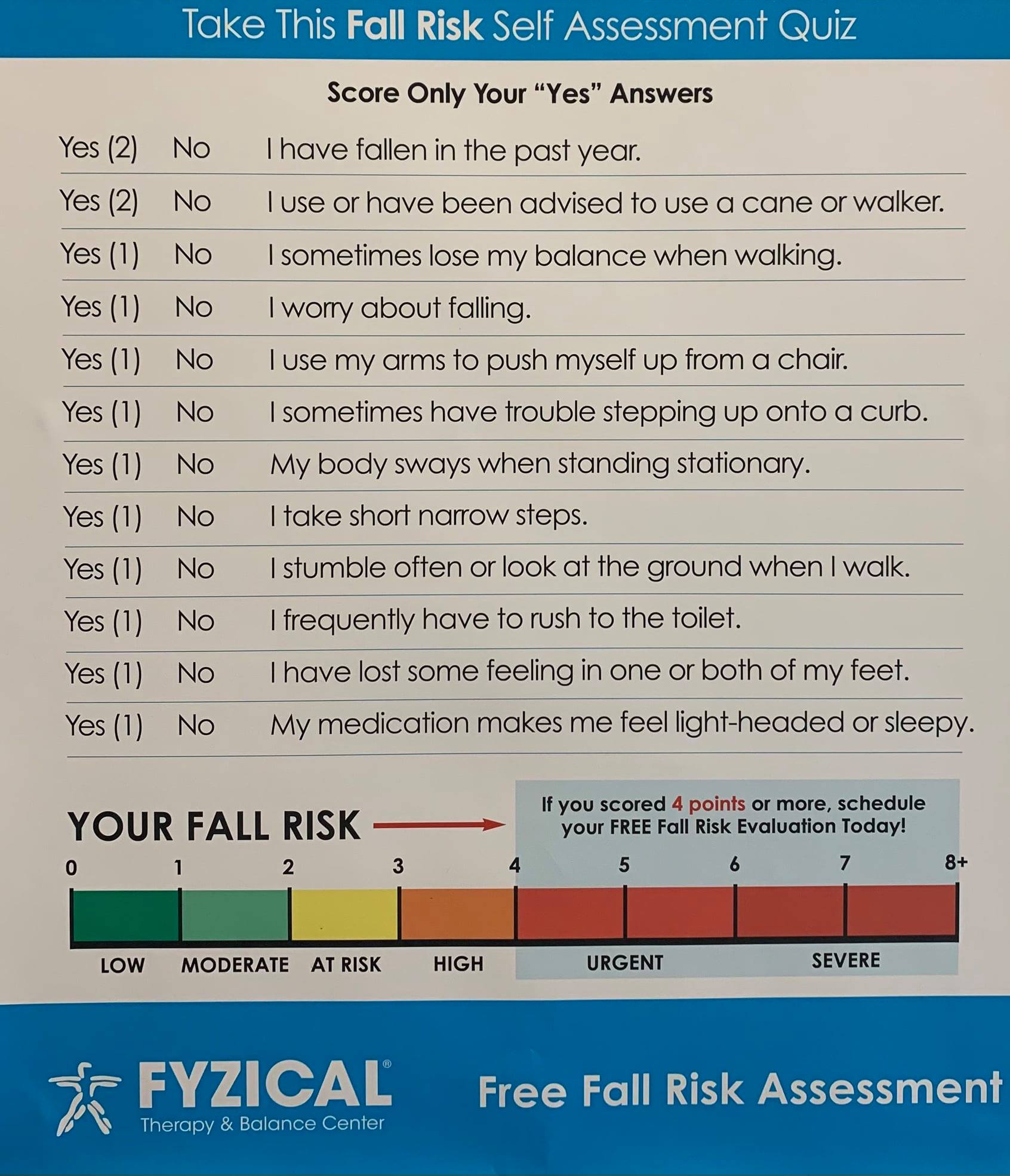Getting The Dementia Fall Risk To Work
Getting The Dementia Fall Risk To Work
Blog Article
Things about Dementia Fall Risk
Table of ContentsDementia Fall Risk Things To Know Before You Get ThisThe 5-Minute Rule for Dementia Fall RiskAbout Dementia Fall RiskThe smart Trick of Dementia Fall Risk That Nobody is Talking About
An autumn threat assessment checks to see how most likely it is that you will fall. The assessment typically consists of: This includes a series of questions regarding your general wellness and if you've had previous falls or problems with equilibrium, standing, and/or strolling.STEADI includes screening, assessing, and intervention. Interventions are recommendations that might lower your threat of dropping. STEADI includes three steps: you for your risk of falling for your danger elements that can be enhanced to attempt to protect against drops (as an example, equilibrium troubles, damaged vision) to lower your threat of dropping by making use of reliable strategies (as an example, giving education and resources), you may be asked several inquiries consisting of: Have you dropped in the past year? Do you feel unsteady when standing or walking? Are you bothered with falling?, your service provider will check your strength, balance, and gait, making use of the following autumn analysis tools: This test checks your stride.
If it takes you 12 seconds or even more, it might indicate you are at greater risk for a fall. This test checks strength and balance.
Move one foot halfway forward, so the instep is touching the large toe of your other foot. Move one foot totally in front of the other, so the toes are touching the heel of your various other foot.
All about Dementia Fall Risk
Most falls occur as a result of multiple adding aspects; consequently, handling the risk of dropping starts with identifying the variables that add to drop danger - Dementia Fall Risk. A few of the most relevant threat aspects include: History of prior fallsChronic clinical conditionsAcute illnessImpaired gait and balance, lower extremity weaknessCognitive impairmentChanges in visionCertain high-risk drugs and polypharmacyEnvironmental variables can additionally boost the threat for drops, including: Poor lightingUneven or harmed flooringWet or unsafe floorsMissing or damaged hand rails and get hold of barsDamaged or incorrectly fitted tools, such as beds, mobility devices, or walkersImproper usage of assistive devicesInadequate supervision of the individuals staying in the NF, consisting of those who exhibit aggressive behaviorsA effective autumn risk management program calls for a thorough scientific evaluation, with input from all participants of the interdisciplinary team

The care strategy should likewise include treatments that are system-based, such as those that promote a safe environment (proper lighting, handrails, order bars, etc). The performance of the interventions must be assessed occasionally, and the treatment plan modified as necessary to show adjustments in the autumn threat assessment. Carrying out a fall danger monitoring system using evidence-based finest technique can decrease the prevalence of drops in the NF, while restricting the potential for fall-related injuries.
The 3-Minute Rule for Dementia Fall Risk
The AGS/BGS standard recommends screening all grownups matured 65 years and older for fall risk yearly. This screening consists of asking individuals whether they have actually fallen 2 or more times in the past year or sought clinical focus for a loss, or, if they have actually not fallen, whether they feel unsteady when walking.
People that have actually fallen once without injury Going Here should have their balance and stride evaluated; those with gait or balance irregularities ought to obtain added assessment. A history of 1 loss without injury and without stride or equilibrium issues does not warrant further assessment past ongoing annual fall risk testing. Dementia Fall Risk. A fall risk analysis is called for as part of the Welcome to Medicare examination

Getting My Dementia Fall Risk To Work
Documenting a falls history is one of the quality indicators for fall prevention and administration. copyright drugs in certain are independent predictors of drops.
Postural hypotension can usually be reduced by lowering the dosage of blood pressurelowering drugs and/or stopping medications that have orthostatic hypotension as a negative effects. Use above-the-knee support hose pipe and sleeping with the head of the bed boosted may additionally reduce postural reductions in blood stress. The preferred elements of a fall-focused health examination are received Box 1.

A pull time higher than or equivalent to 12 secs suggests high loss danger. The 30-Second Chair Stand test assesses reduced extremity stamina and balance. Being incapable to stand up from a chair of knee height without making use of one's arms suggests read what he said boosted fall threat. The 4-Stage Balance test analyzes static balance by having the person stand in 4 placements, each gradually more difficult.
Report this page